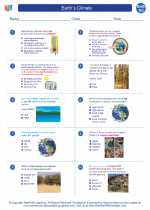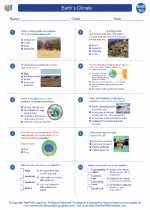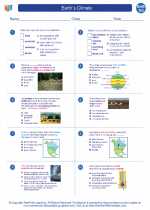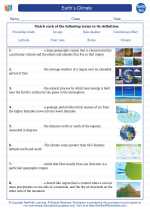Layers of the Earth
The Earth is composed of four main layers: the inner core, outer core, mantle, and crust.
1. Crust
The crust is the outermost layer of the Earth. It is the thinnest layer, ranging from 5 to 70 kilometers in thickness. The crust is divided into continental crust and oceanic crust. The continental crust is thicker and less dense compared to the oceanic crust.
2. Mantle
The mantle is the layer beneath the crust and makes up about 84% of the Earth's volume. It is composed of silicate rocks that are solid but capable of flowing over long periods of time. The mantle is divided into the upper mantle and the lower mantle based on differences in physical properties.
3. Outer Core
The outer core is a liquid layer composed of iron and nickel. It is responsible for generating the Earth's magnetic field through the movement of conductive materials. The outer core is about 2,300 kilometers thick.
4. Inner Core
The inner core is the Earth's innermost layer, consisting mostly of iron and nickel in a solid state due to high pressure despite extremely high temperatures. It has a radius of about 1,220 kilometers.
Key Concepts to Remember
- The Earth is composed of the crust, mantle, outer core, and inner core.
- The crust is the outermost layer, followed by the mantle, outer core, and inner core.
- The mantle is the thickest layer and is primarily composed of solid but flowing rock.
- The outer core is a liquid layer that generates the Earth's magnetic field.
- The inner core is a solid layer due to high pressure despite extremely high temperatures.
Study Tips
When studying the layers of the Earth, it's important to understand the composition and characteristics of each layer. Use diagrams and visual aids to help visualize the structure of the Earth's layers. Practice identifying the differences between the continental and oceanic crust, as well as the properties of the mantle, outer core, and inner core. Additionally, consider conducting experiments or simulations to demonstrate the behavior of materials under high pressure and temperature conditions.
.◂Earth Science Worksheets and Study Guides High School. Earth`s Climate

 Worksheet/Answer key
Worksheet/Answer key
 Worksheet/Answer key
Worksheet/Answer key
 Vocabulary/Answer key
Vocabulary/Answer key
 Vocabulary/Answer key
Vocabulary/Answer key
 Vocabulary/Answer key
Vocabulary/Answer key
